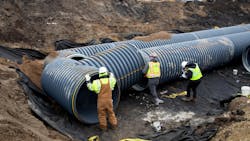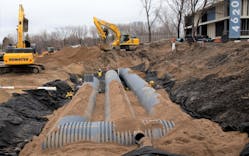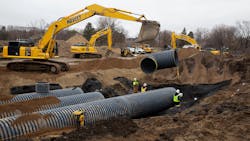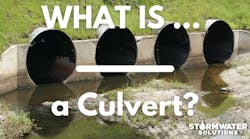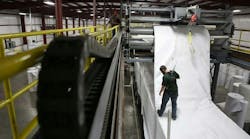Focusing on sustainable green construction methods and best management practices (BMPs), The Fred residential apartment complex in Edina, Minnesota, included a rainwater harvesting and reuse system in its design. The project used a large diameter polypropylene pipe for the system that can hold nearly 3,400 cubic feet of water used for irrigation with an additional nearly 1,500 cubic feet used for live storage for the 5.5-acre site. It was named Project of the Year for 2022 by the Drainage Division of the Plastics Pipe Institute, Inc. (PPI).
The project site
The Fred is a 522,717 square-foot residential apartment building whose backyard goes into the Fred Richards Park that has more than 40 acres of park land. Construction began in 2022, and 408 units became available for lease in 2023. The site was part of the Pentagon Park office development, and The Fred replaced a deserted office building. Prior to the current success, the site was denied a permit partly due to lack of an integrated stormwater management plan. There were additional concerns including the rising water table in Edina, the location near Nine Mile Creek, and the corrosive nature of the soil due to the site’s longtime use for industrial and office buildings.
“We were in charge of getting the project permitted through the city and the watershed district in terms of the site features and stormwater quality and quantity pieces,” said Robbie Latta, civil engineer at Civil Site Group. “One of the difficulties about the site was that there is a particularly high groundwater table in the area as well as very poorly infiltrating soils. It’s basically a swamp. The watershed districts in Minnesota are pretty strict about what you can and can't do with stormwater runoff on-site. The watershed district requires that you retain a certain amount of stormwater runoff on-site in order to prevent pollution of surface waters. Then those peaty soils are very poorly infiltrating.”
Latta added: “Due to the high groundwater table and the poorly infiltrating soils, the only real option to meet their requirements was to provide rainwater collection and reuse for site irrigation. That's why we chose polypropylene pipe manufactured by Prinsco to put together this rainwater collection system so it could be reused for site irrigation.”
Setting up the stormwater system
The underground system designed for a 100-year storm is made up of three rows of Prinsco’s 60-inch diameter dual-wall Goldpro Storm polypropylene pipe with ASTM D3212 watertight joints to prevent infiltration and exfiltration. The pipes were wrapped in non-woven geotextile.
“Polypropylene has a high stiffness coefficient, making it well suited for a variety of applications,” said Daniel Currence, P.E. and director of engineering for the drainage division of PPI. “When used to make pipe, this inherent benefit improves joint performance by creating a fast, solid connection.”
Because the Prinsco Goldpro Storm pipe is manufactured in 20-foot lengths it enabled the project to be installed quickly. Moving the pipe into the pit and properly aligning the joints required less time, and because the polypropylene pipe has an inline bell, additional excavation for bell holes was not needed.
“Pipe weight is a critical consideration in the cost and use of fuel to deliver the product – a component of the carbon footprint,” Currence said. “Even large polypropylene pipe with its 20-foot length weighs a tenth of other types of pipe. That weight differential means a great deal in reducing transportation costs and greenhouse emissions.”
Currence add: “The rainwater harvest system designed and built for this boutique apartment complex was relatively small even though it can hold more than 37,000 gallons of water, but its impact will offer significant payoffs through the lifespan of this property. More and more we see engineering groups and project owners prioritizing sustainable stormwater solutions that contribute to a green construction strategy. And rainwater harvest systems not only help meet runoff elimination targets but also help preserve the potable water supply by reusing rainwater for irrigation. It’s a natural fit for projects like The Fred.”
